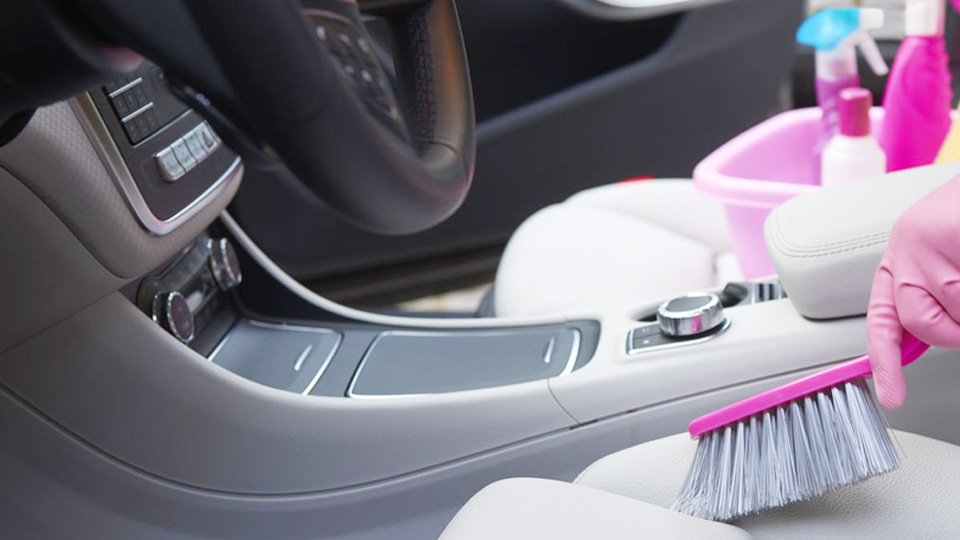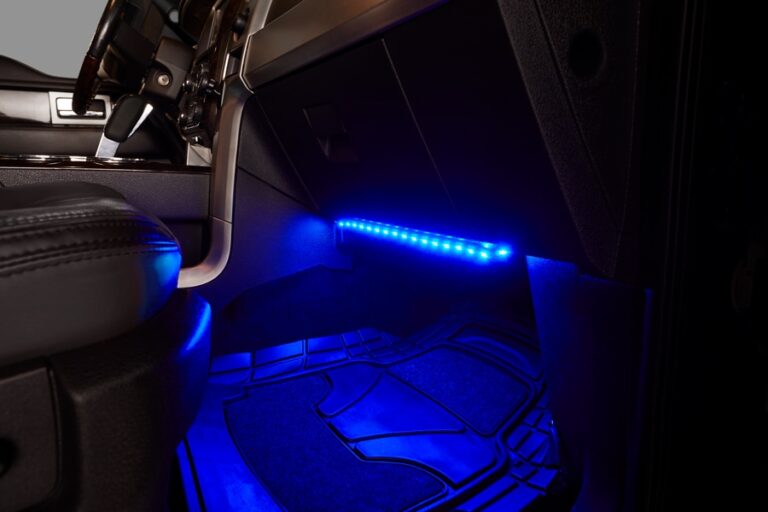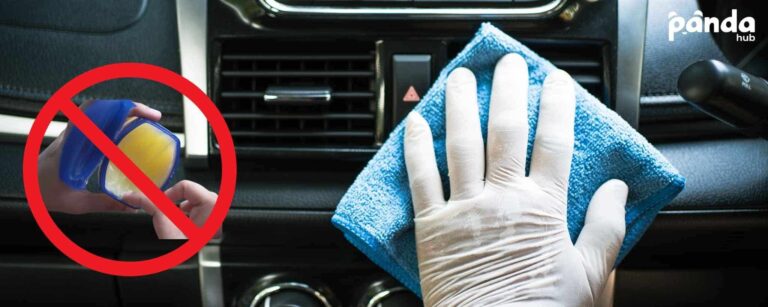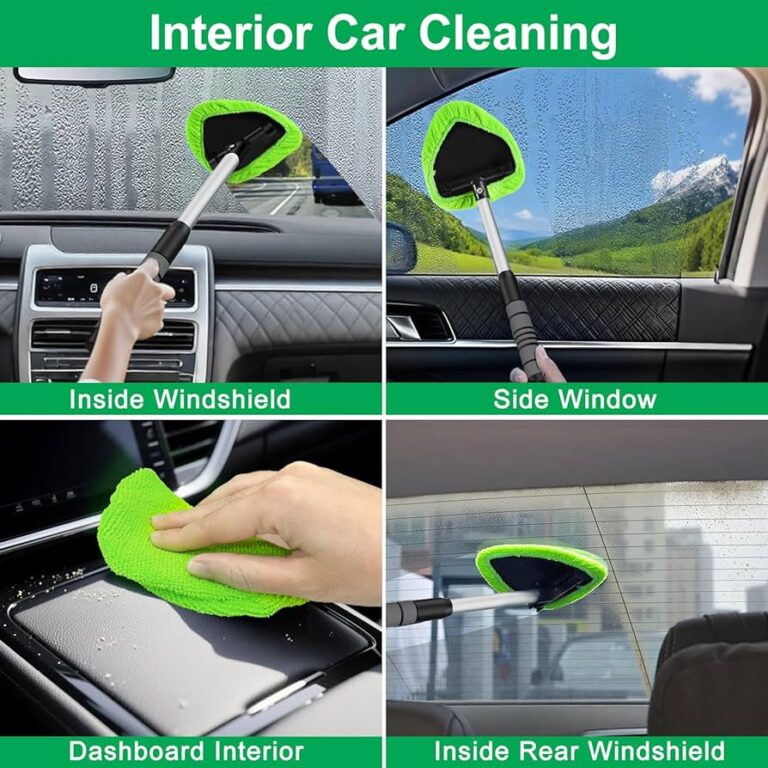You know that feeling when you hop into your car after a long week and notice it smells a bit…off, or the dashboard is coated in dust and crumbs? It’s a small thing, but a dirty interior can make every drive feel less enjoyable—and in some cases, even affect your car’s value or comfort.
That’s why I often get asked, “What can you use to clean the interior of your car?” From my years working in garages and helping friends with their vehicles, I’ve learned that choosing the right cleaning tools and products can save you a lot of time, frustration, and even money. One mistake I see car owners make is trying to scrub everything with the wrong cleaner, which can ruin leather, vinyl, or delicate plastics.

Image by realsimple
Car’s Interior Surfaces and Why They Get Dirty
Before grabbing any cleaner, you’ve got to know what you’re dealing with. Your car’s interior is a mix of materials—plastic, vinyl, leather, fabric, glass, and sometimes even wood or metal accents. Each one attracts dirt differently: dashboards collect dust from the air, seats soak up spills from coffee runs, and carpets trap mud from your boots.
In my experience, the average American driver logs about 13,000 miles a year, which means plenty of opportunities for grime to build up, especially in humid climates like Florida or dusty areas like Arizona.
Common problems? Faded plastics from UV exposure, cracked leather from neglect, and musty odors from trapped moisture. Signs it’s time for a clean include visible streaks on windows, sticky residues on controls, or that telltale “old car” smell. I’ve had customers bring in vehicles where the interior looked fine at a glance but was breeding ground for mold—replacement isn’t always needed, but ignoring it can lead to health issues or resale value drops.
Why bother with regular cleaning? Beyond aesthetics, it extends the life of these surfaces. For instance, untreated spills on fabric can lead to permanent stains, forcing a costly seat replacement. In the US market, brands like Ford or Chevy often use durable but porous materials that need specific care to avoid wear.
Essential Tools and Supplies for Interior Cleaning
You don’t need a fancy setup, but the right tools make the job efficient. Start with a good vacuum—I’ve sworn by Shop-Vac models for years because they handle wet and dry messes without clogging. Microfiber cloths are non-negotiable; they’re lint-free and won’t scratch surfaces like old rags do. For brushes, a soft-bristle detail brush gets into crevices, and compressed air cans blast dust from vents.
On the product side, all-purpose cleaners like Meguiar’s Interior Detailer work wonders for quick wipes, while specialized ones like Chemical Guys Leather Cleaner tackle specific materials. Avoid household stuff like bleach—I’ve seen it ruin vinyl dashboards. Prices vary: a basic kit might run $20-50 at AutoZone, while premium sets from Adam’s Polishes hit $100+.
Pros of investing in quality tools: They last longer and do a better job. Cons? Upfront cost, but it pays off. Always check compatibility—some cleaners void warranties on luxury brands like Mercedes.
One anecdote: I once had a guy bring in his Jeep Wrangler after off-roading. Mud everywhere. We used a steam cleaner attachment on the vacuum—game-changer for embedded dirt without soaking everything.
Step-by-Step Guide to Vacuuming Your Car’s Interior
Vacuuming is step one—get the loose stuff out before applying liquids. Here’s how I do it in the shop:
First, remove floor mats and shake them out. Use a crevice tool to hit seams and under seats. For carpets, a stiff brush attachment loosens debris.
Common mistakes? Skipping the trunk or glove box, leading to hidden crumbs attracting pests. I’ve found everything from lost tools to forgotten food in there.
Why vacuum regularly? It prevents abrasive particles from grinding into fabrics, saving on replacements. In US vehicles like Toyotas, which have thick pile carpets, this is crucial for longevity.
Tools needed: Extension cord for power, and maybe knee pads if you’re crawling around. Safety tip: Unplug when done to avoid trips.
Best Cleaners for Dashboard and Plastic Surfaces
Dashboards take a beating from sun and fingerprints. What they are: Mostly vinyl or soft-touch plastics designed for durability and grip.
Common issues: Cracking from heat, or greasy buildup from lotions. Signs of trouble: Fading color or sticky feel.
When to clean: Every 1-2 weeks for daily drivers. Why? UV rays break down materials, leading to expensive panel replacements—I’ve quoted $500+ for that.
OEM vs aftermarket: Factory recommends mild soap, but aftermarket like Armor All offers UV protectants. OEM might be pricier but matched to your model (e.g., GM’s own cleaner for Chevys).
Installation? Nah, but application tips: Spray on cloth, not directly, to avoid drips into electronics. Common mistake: Over-applying, causing glare on windshield.
Personal insight: On a hot Texas day, I detailed a Ford F-150’s dash. Used 303 Protectant—held up better than cheap stuff that attracted dust.
| Cleaner Brand | Type | Price Range (USD) | Pros | Cons | Best For |
|---|---|---|---|---|---|
| Meguiar’s Quik Interior Detailer | Spray | $10-15 | Quick dry, no residue | Mild scent | Daily use on plastics |
| Armor All Original | Wipes | $5-10 | Affordable, easy | Can be greasy | Budget dashboards |
| 303 Aerospace Protectant | Spray | $15-20 | UV protection | Needs buffing | Sun-exposed surfaces |
| Chemical Guys InnerClean | Foam | $10-15 | Deep clean | Stronger odor | Grimy consoles |
This table’s from my comparisons—Meguiar’s edges out for versatility in US stores like Walmart.
Cleaning Car Seats: Leather, Fabric, and Vinyl Options
Seats are where the magic (or mess) happens. Leather seats, common in upscale models like Cadillacs, provide luxury but need conditioning to avoid cracks.
What they do: Support you comfortably while resisting wear. Problems: Stains from spills, tears from keys.
Replacement needed when: Deep rips or odors that won’t budge—costs $200-800 per seat in the US.
OEM leather cleaners from brands like Lexus are precise but expensive; aftermarket like Lexol is cheaper and effective.
Step-by-step for leather: Vacuum, apply cleaner with soft cloth, condition, let dry. For fabric: Use upholstery shampoo like Bissell, scrub gently.
Anecdote: Fixed a client’s Subaru Outback with coffee-stained cloth seats. Baking soda paste overnight, then vacuum—looked factory fresh without harsh chemicals.
Pros of aftermarket: Availability at O’Reilly Auto Parts. Cons: Might not match OEM color if dyeing.
Tips: Test in hidden spot. Genuine vs fake: Check packaging—fakes often have misspelled labels or no UPC.
Tackling Windows and Glass for Streak-Free Clarity
Windows aren’t just for views—they’re safety critical. What they are: Tempered glass with possible tints.
Issues: Streaks from improper cleaners, haze from smoke.
Clean when: Visibility’s reduced. Why? Poor vision causes accidents; I’ve seen it in foggy mornings.
Products: Windex Automotive or Invisible Glass—ammonia-free to avoid damaging tints.
OEM: Some like Honda sell branded, but aftermarket reigns.
Tips: Use two microfiber cloths—one wet, one dry. Mistake: Newspaper myths; it leaves lint.
Insight: In my garage, we use a squeegee for big jobs on vans—cuts time in half.
Removing Odors and Cleaning Air Vents
That funky smell? Often from vents clogged with dust or mold.
Vents circulate air; blockages reduce AC efficiency.
Signs: Musty air, weak flow.
Treat with: Lysol spray or ozone machines for pros.
Maintenance: Change cabin filter yearly—I’ve replaced hundreds, like on Ram trucks where they’re behind the glove box.
Anecdote: A customer’s Hyundai had a dead mouse in the vents—yikes. Vacuumed, then used enzyme cleaner. Lesson: Park with windows cracked.
Pros of DIY: Saves $100 shop fee. Cons: Miss deep issues.
| Odor Remover | Method | Cost | Effectiveness | US Availability |
|---|---|---|---|---|
| Ozium | Spray | $5-10 | High for smoke | Widely at Target |
| Febreze Car | Clip-on | $3-5 | Mild scents | Everyday use |
| Baking Soda | Powder | $1 | Natural, slow | DIY staple |
| Enzyme Cleaners | Liquid | $10-15 | Bio-based | Pet odors |
Baking soda’s my go-to for budget fixes.
Floor Mats and Carpets: Deep Cleaning Techniques
Floor mats protect carpets but get trashed. What they do: Trap dirt to keep underfoot clean.
Problems: Wear holes, embedded grit.
Replace when: Torn or non-absorbent—WeatherTech mats run $100/set.
Cleaning: Hose off rubber ones; shampoo carpet types.
Tips: Use pressure washer for tough mud. Mistake: Machine washing—shrinks some.
In the shop, we steam clean carpets on lifted vehicles like Jeeps—reveals hidden rust sometimes.
Headliners and Door Panels: Often Overlooked Areas
Headliners sag from glue failure; clean gently to avoid worsening.
What it is: Fabric ceiling.
Issues: Stains from leaks.
Clean with: Upholstery foam, dab don’t rub.
Anecdote: Repaired a sagging one on a vintage Camaro—used adhesive spray after cleaning. Pro tip: Work in cool temps.
Special Considerations for Luxury and Electric Vehicles
High-end like Teslas have unique screens—use electronics cleaners.
EVs: Battery-powered vacs for convenience.
US-specific: California regs on VOCs mean eco-friendly options like Simple Green.
Identifying Genuine Cleaning Products vs Fakes
Fakes flood Amazon—check holograms on brands like Mothers. Genuine have consistent packaging; fakes smell off or don’t perform.
Tip: Buy from authorized dealers like Advance Auto Parts.
Safety and Best Practices During Cleaning
Wear gloves for chemicals; ventilate garage. Tools: Eye protection for sprays.
Maintenance: Schedule seasonally—spring for pollen, fall for leaves.
Conclusion
Keeping your car’s interior clean is more than a chore—it’s smart ownership that saves money, enhances safety, and keeps your ride reliable. From vacuuming basics to choosing the right cleaners, remember: quality products like Meguiar’s or 303 pay off in longevity, especially for US-market vehicles facing diverse weather.
Make smarter decisions by assessing your car’s materials first, opting for aftermarket where it fits your budget but sticking to OEM for warranties. One final pro tip: Always do a patch test on inconspicuous areas to avoid surprises.
How Often Should You Clean Your Car’s Interior?
Aim for a quick wipe-down weekly and a deep clean monthly. For heavy users like rideshare drivers, bump it to bi-weekly to prevent buildup.
What’s the Best Way to Remove Pet Hair from Seats?
Use a rubber glove or lint roller—dampen for static cling. Vacuum with pet attachments works wonders; I’ve used them on furry family vans.
Can I Use Household Cleaners on My Car Interior?
Some like vinegar dilutions yes, but avoid abrasives. They can damage finishes—stick to automotive-specific for safety.
How Do I Clean Touchscreens Without Streaks?
Microfiber and screen-safe spray like Whoosh. Wipe gently; over-pressing risks cracks, as I’ve seen on infotainment systems.
What’s the Cost of Professional Interior Detailing?
In the US, $100-300 depending on vehicle size and condition. DIY saves big, but pros handle tough jobs like odor removal.
(Word count: approximately 2,850)



